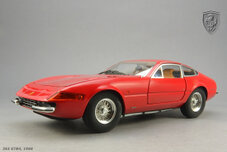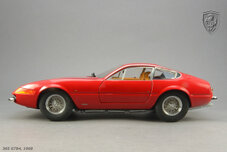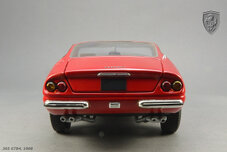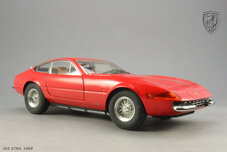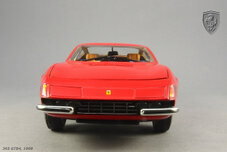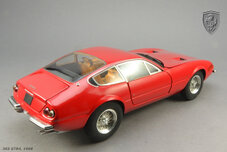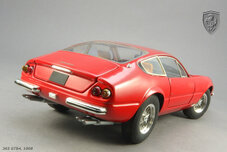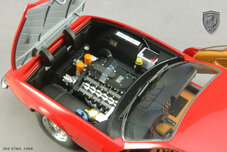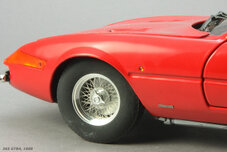1968, 365 GTB4 Daytona (Elite, diecast)
The evolution of the 275 GTB4 was a milestone in the history of extreme high-performance front-engined sports cars. Sleek and modern Pininfarina lines were matched by a development of the 4.4-litre V12 engine fed by six Weber twin-choke 40 mm carburettors, and the excellent weight distribution provided by the rear gearbox transaxle produced a car of rare balance which guaranteed a unique driving experience. Many fans know it by its unofficial name of “Daytona”.
The 365 GTB4 berlinetta was the replacement for the 275 GTB4 model and, like so many new Ferrari models of the period, made its public debut at the Paris Salon, in the autumn of 1968. It almost immediately became known as the “Daytona”, although this was an unofficial title given by the media of the time, supposedly in recognition of the Ferrari 1-2-3 victory in the Daytona 24-Hour Race in 1967. However, the unofficial name has stuck, and continues to be widely used today.
This was the last new 12-cylinder Ferrari model announced before Fiat took over control of road car production in 1969, when they purchased 40 per cent of the share capital, with a further 49 per cent passing to them upon the death of Enzo Ferrari. It was also the last 12-cylinder Ferrari to be sold new in the USA (through official channels) until 1984, when the Testarossa was announced. This was due to the high cost for a low volume manufacturer of meeting increasingly strict legislative requirements.
Early prototype examples featured a nose style based on that of the outgoing 275 GTB4 model, but the definitive style was a radically different and more angular wedge design, featuring a full width Plexiglass strip behind which were mounted a twin headlight assembly at each side, running into the wing sides with the side/turn indicator units.
In 1971 this lighting arrangement was superseded by a twin retractable system, as changes in USA legislation did not permit headlights behind covers. As this model had been designed from the outset to comply with US legislation, due to the importance of sales in that market, the alteration had to be made. An alternative of fixed open headlights had been tried, but this upset the clean shape of the nose, whilst the retractable solution meant that the original profile would be retained, except when the lights were in use.
auto.ferrari.com

